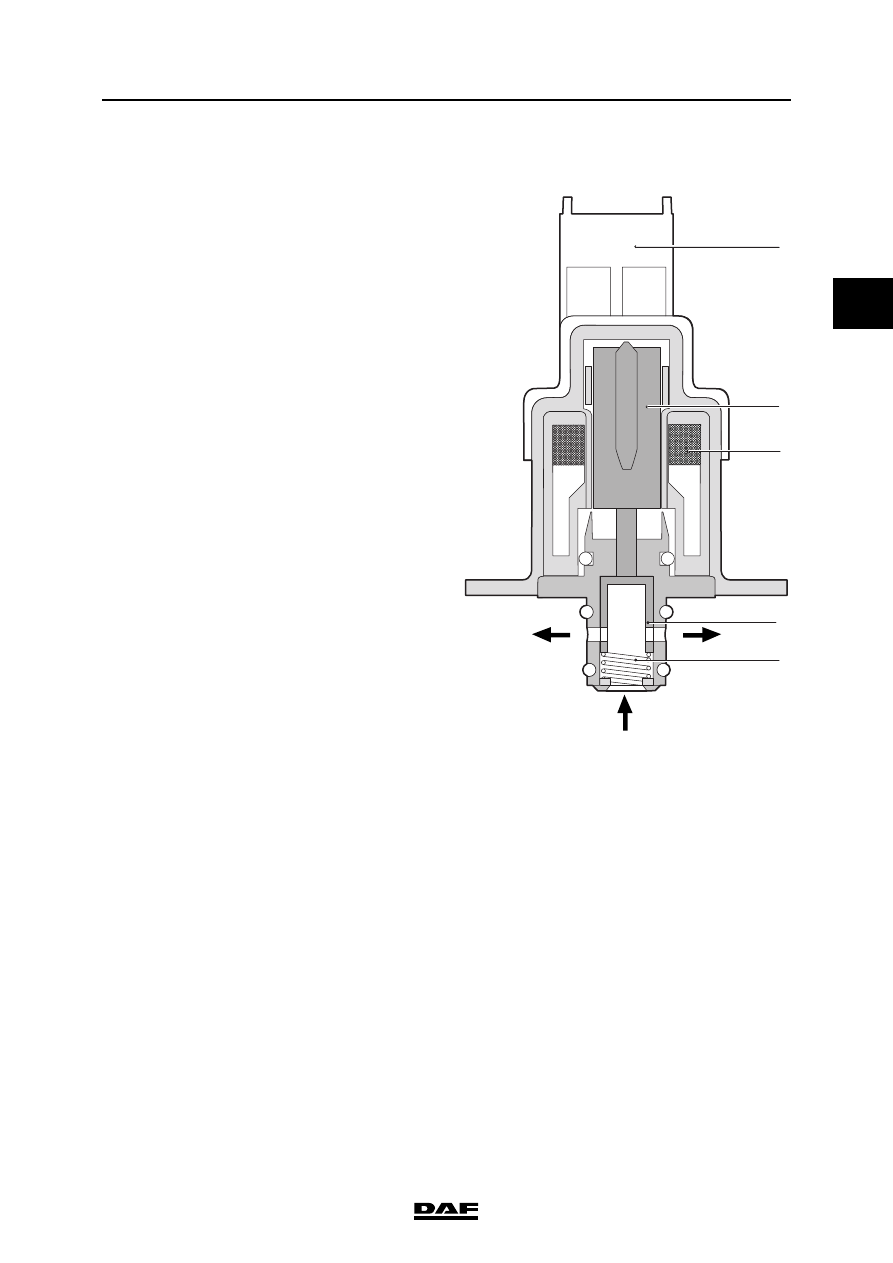DAF LF45, LF55 Series. Manual - part 290

©
200416
3-3
Description of components
BE ENGINE FUEL SYSTEM
ΛΦ45/55 series
4
2
3.2 FUEL PUMP CONTROL SOLENOID VALVE
The high-pressure pump has an over-capacity for
normal operating conditions. This could lead to
large quantities of fuel being forced at high
pressure to the fuel rail and then directly being
drained out to the return pipe via the pressure-
limiting valve on the fuel rail. This produces too
much unnecessary heat and loss of capacity
because large amounts of fuel are flowing at high
pressure.
The system has been designed such that only
fuel that will be used will be forced under high
pressure to the rail. For this reason, a fuel pump
control solenoid valve has been fitted at the
suction side of the high-pressure pump. This
solenoid valve is opened without being
energised, so that the high-pressure pump
elements can be filled in the normal manner.
If the fuel rail pressure becomes too high, for
example because of lower fuel off-take on the rail,
the solenoid valve will be energised by the
electronic unit with a higher duty cycle, so that the
plunger is pressed with a greater force against
the spring pressure and the valve reveals a more
constricted opening. This reduces the fuel supply
to the pump elements and the pump output will
thus fall. The fuel rail pressure will also fall as a
consequence.
If the rail pressure is too low, the reverse is true.
The current is supplied to the coil (3) via the
connector (1). The current pushes the core (2)
with the plunger (4) against the pressure of the
spring (5). This controls the fuel current from
input A to output B.
Due to this valve, under normal circumstances
very little fuel flows back from the rail. This
improves performance and reduces the
generation of heat.
B
A
B
i400591
1
2
3
5
4